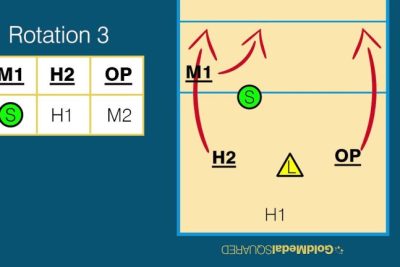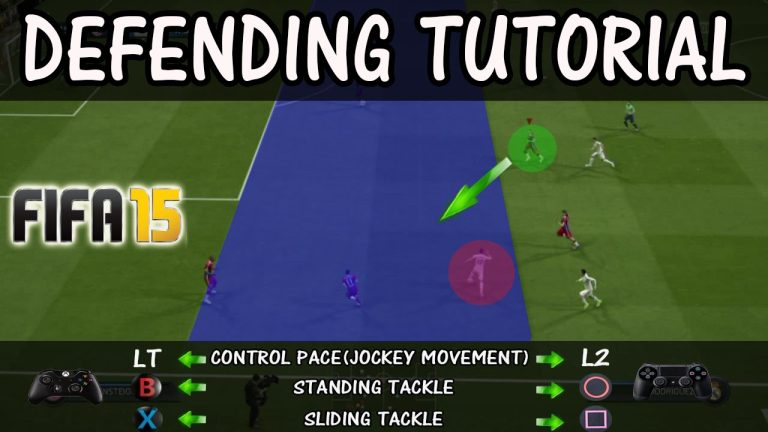
If you’ve ever found yourself confused by the scoring system in volleyball, you’re not alone. With its unique rules and terminology, understanding how points are earned can be a challenge for newcomers and even seasoned players. In this article, we’ll break down the volleyball scoring system into simple and easy-to-understand terms, allowing you to fully grasp the game and enhance your enjoyment on and off the court. Get ready to dive into the world of volleyball scoring and unlock a whole new level of appreciation for this exciting sport.
- The volleyball scoring system is based on a best-of-five sets format, where the first team to win three sets wins the match. Each set is played to 25 points, but the team must win by a margin of two points. If a fifth set is necessary, it is played to 15 points with the same two-point margin rule.
- In volleyball, teams can score points through various methods. The most common way to score is by successfully hitting the ball over the net and landing it in the opposing team’s court, resulting in a point. Additionally, teams can earn points if the opposing team commits a fault, such as serving the ball out of bounds or making an illegal play. Understanding these scoring methods is crucial in comprehending the volleyball scoring system.
Advantages
- Advantages of Understanding the Volleyball Scoring System:
- Improved Strategy: By understanding the volleyball scoring system, players and coaches can develop more effective game strategies. They can analyze the score and plan their moves accordingly. This understanding allows them to make informed decisions about when to attack aggressively, when to play defensively, and when to take risks. Overall, it enables teams to create a tactical advantage over their opponents.
- Enhanced Communication: Understanding the volleyball scoring system promotes better communication among players on the court. When everyone is aware of the scoring rules, it becomes easier to coordinate plays and communicate effectively. Players can quickly adapt their strategies based on the score, communicate their intentions, and make split-second decisions with confidence. This leads to improved teamwork, coordination, and ultimately, better performance on the court.
Disadvantages
- Complexity: One disadvantage of understanding the volleyball scoring system is its complexity. The system can be confusing for newcomers to the sport or those who are not familiar with its rules. Unlike other sports with simpler scoring systems, volleyball scoring involves intricate rules and different point allocations for various actions such as serving, attacking, blocking, and defensive plays. This complexity can make it challenging for individuals to grasp the scoring system quickly and accurately.
- Learning Curve: Another disadvantage is the steep learning curve associated with understanding the volleyball scoring system. Due to its complexity, it may take some time for beginners to become fully acquainted with the scoring rules and strategies involved. This can be especially frustrating for individuals who are eager to participate in the sport but find it difficult to navigate the intricacies of the scoring system. The learning curve may deter some individuals from fully engaging with volleyball or may lead to a longer adaptation period for newcomers.
- Subjectivity of Officiating: The subjective nature of officiating in volleyball is another disadvantage that can affect the understanding of the scoring system. In some cases, the referee’s interpretation of the rules may vary, leading to inconsistent application of scoring decisions. This subjectivity can create confusion and frustration among players, coaches, and spectators, as it may seem that certain actions are awarded or penalized inconsistently. The subjective nature of officiating can make it difficult for individuals to fully comprehend the scoring system and accurately predict the outcome of certain actions during a match.
How does volleyball scoring work?
Scoring in volleyball is straightforward and revolves around winning points during each rally. The process starts with a serve, and the point is awarded to the team that successfully prevents the opposing team from returning the ball over the net. Alternatively, a point can be earned if the opposing team hits the ball out of the court boundaries.
How are points calculated in volleyball?
In volleyball, points are calculated by scoring 1 point every time the ball touches the floor on the opponent’s side. This dynamic game involves teams taking turns sending the ball over the net to the other side, creating an exciting back-and-forth action. However, there is a rule that adds an element of strategy: each team can only touch the ball 3 times in a row before they are required to hit it to the other side. This rule ensures that the game remains balanced and allows for skillful plays. Ultimately, if the ball touches the floor on one team’s side, the opposing team gains 1 point, adding to the intensity and competitiveness of the match.
Volleyball scoring revolves around a straightforward principle: every time the ball hits the floor on the opponent’s side, a point is awarded. The game showcases the teams’ abilities to send the ball back and forth over the net, emphasizing the importance of precision and quick reflexes. However, an intriguing twist is added to the gameplay with the “3-touch rule.” This rule limits each team to only 3 consecutive touches before they must hit the ball to the other side. This rule ensures that both teams have equal opportunities to control the game and adds an element of strategy and skill.
In the thrilling sport of volleyball, points are earned when the ball touches the ground on the opponent’s side. The game is characterized by intense rallies, as teams take turns sending the ball over the net. To maintain fairness, a “3-touch rule” is enforced, requiring teams to hit the ball to the other side after three consecutive touches. This rule challenges players to strategize and work together to keep the ball in play. If the ball fails to be returned and touches the ground on one team’s side, the opposing team gains a point, making each point a valuable asset in the pursuit of victory.
What is the scoring system employed in volleyball?
The points system used in volleyball is based on a rally scoring system, where a point is awarded after every rally, regardless of which team serves. The objective is for a team to reach a total of 25 points with a two-point advantage in order to win a set. This scoring method ensures that every play counts and adds excitement to the game as teams strive to earn points consistently.
In volleyball, the scoring rules are straightforward and designed to maintain fairness and competitiveness. Each rally results in a point, regardless of the serving team. The goal is to accumulate a total of 25 points with a two-point lead to win a set. This scoring system enhances the intensity of the game, as each team must focus on earning points consistently while also preventing their opponents from gaining an advantage. With this rally scoring method, volleyball guarantees a thrilling and engaging experience for players and spectators alike.
Spike into Success: Mastering the Volleyball Scoring System
Paragraph 1:
Spike into Success: Mastering the Volleyball Scoring System
Unlock your true potential on the volleyball court by mastering the scoring system. Understanding the ins and outs of volleyball scoring is the key to elevating your game and achieving success. Whether you’re a beginner or a seasoned player, delving into the intricacies of the scoring system will give you a competitive edge. From learning how to score points to strategizing around rotations, this comprehensive guide will equip you with the knowledge and skills needed to dominate the court. So, dive into the world of volleyball scoring and watch as you spike your way to success.
Paragraph 2:
Score big by mastering the volleyball scoring system. With this essential knowledge, you’ll be able to navigate the game with confidence and precision. From serving to blocking, understanding how points are earned will allow you to make strategic decisions that can turn the tide in your favor. Whether you’re aiming to compete at a professional level or simply looking to improve your recreational play, mastering the scoring system is a crucial step towards reaching your goals. So, join the ranks of volleyball champions and spike your way into success by unlocking the secrets of the scoring system.
Serving Up Points: Unraveling the Volleyball Scoring System
Paragraph 1: Serving Up Points: Unraveling the Volleyball Scoring System
Volleyball, a popular sport played worldwide, has a unique scoring system that can be confusing to newcomers. The game revolves around two teams, each aiming to earn points by successfully hitting the ball over the net and into the opponent’s court. With each rally, points can be scored by either team, making for an exhilarating and fast-paced competition. Understanding the intricacies of the volleyball scoring system is essential for players and spectators alike, adding to the excitement of the game.
Paragraph 2:
In volleyball, points are awarded for various actions on the court. The most common way to score is by making the ball land within the opponent’s boundaries, earning the team one point. However, points can also be earned through errors made by the opposing team, such as hitting the ball out of bounds or failing to return the serve. It is important to note that only the serving team can score points, and they continue to serve until they commit an error or lose a rally. This dynamic scoring system ensures that every action on the court can impact the game’s outcome.
Paragraph 3:
The volleyball scoring system is designed to promote fairness and competitiveness. To win a set, a team must reach a predetermined number of points, typically 25, with a minimum two-point lead. If the score reaches a tie at 24-24, the game enters a “deuce” situation. In a deuce, the first team to gain a two-point advantage, for example, 27-25, wins the set. Matches are usually played as a best-of-five sets format, ensuring that teams have to consistently perform at a high level to secure victory. The scoring system’s intricacies make volleyball a thrilling and strategic sport that keeps players and fans engaged from start to finish.
In order to fully grasp the intricacies of the volleyball scoring system, it is essential to comprehend the significance of every point earned and the strategies employed by both teams. By diving into the rules and regulations, appreciating the role of each player, and recognizing the intense dynamics of the game, we can develop a profound understanding of this exhilarating sport. So, the next time you find yourself watching a thrilling volleyball match, take a moment to appreciate the complexities behind the scoring system and marvel at the skill, teamwork, and strategy that make it truly captivating.







